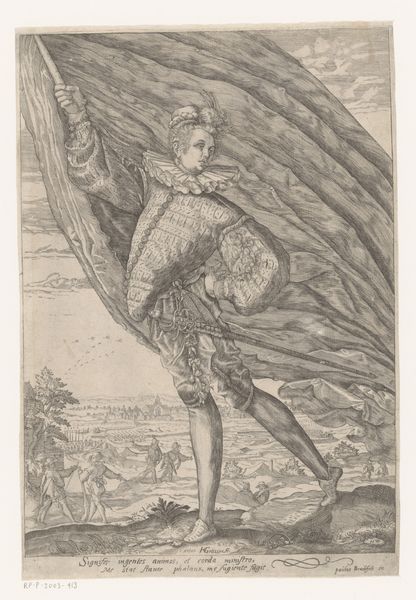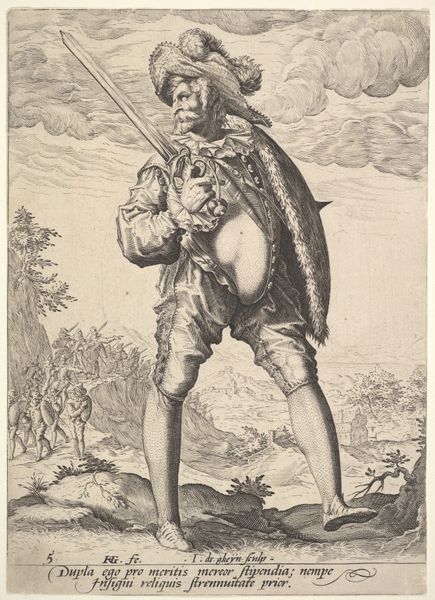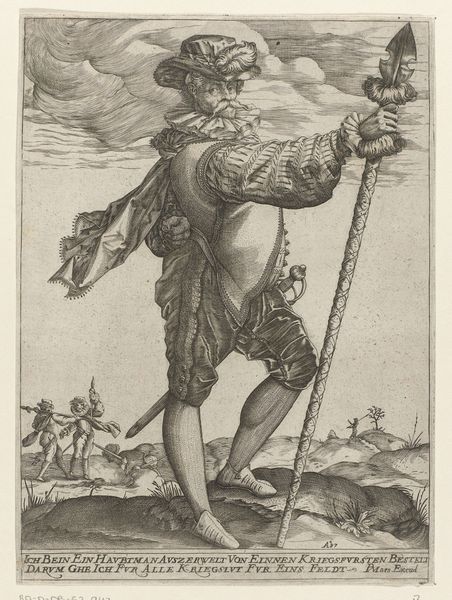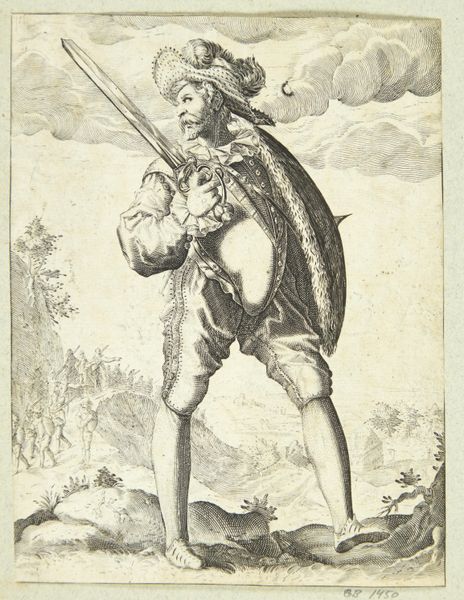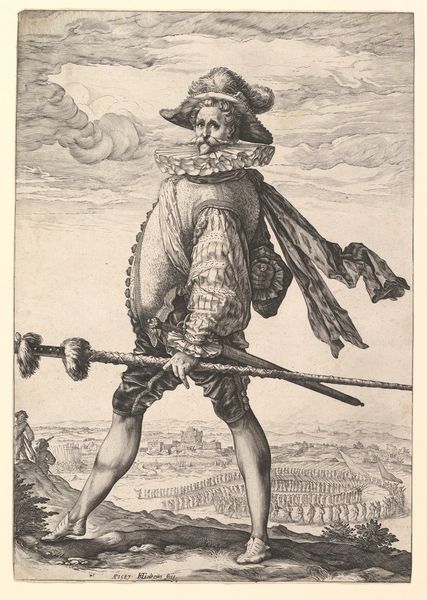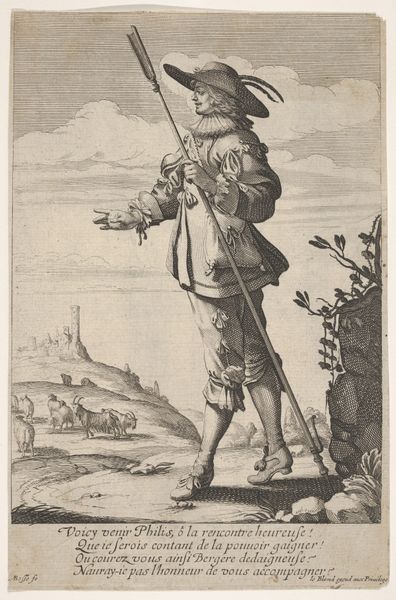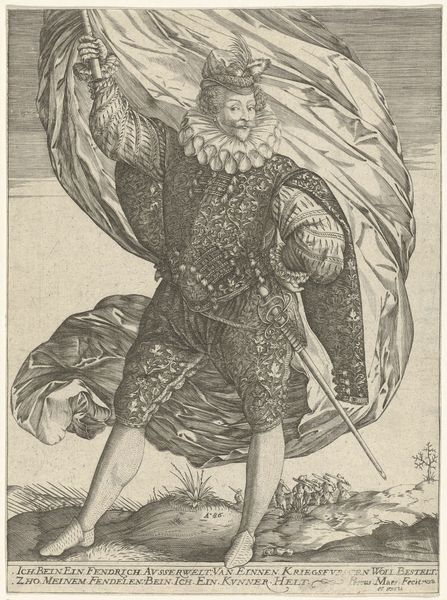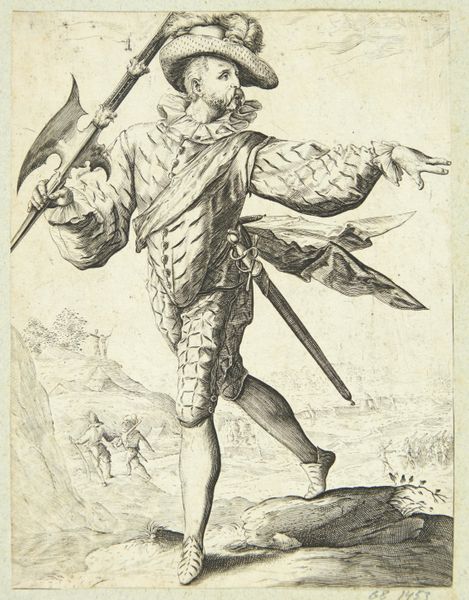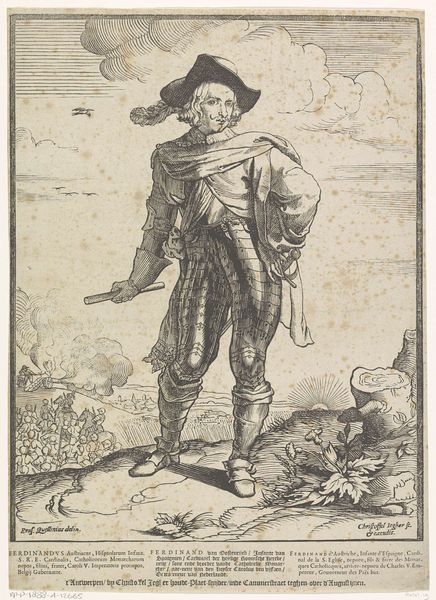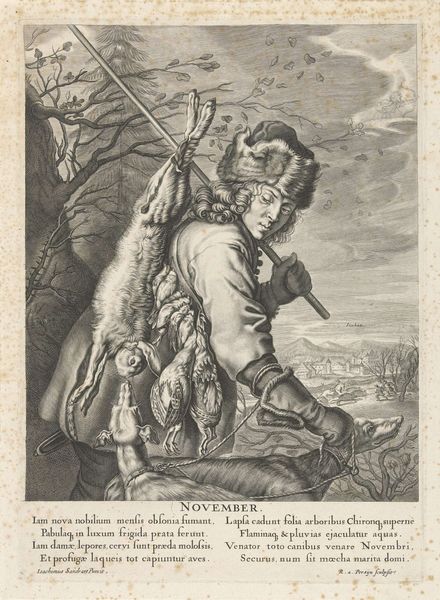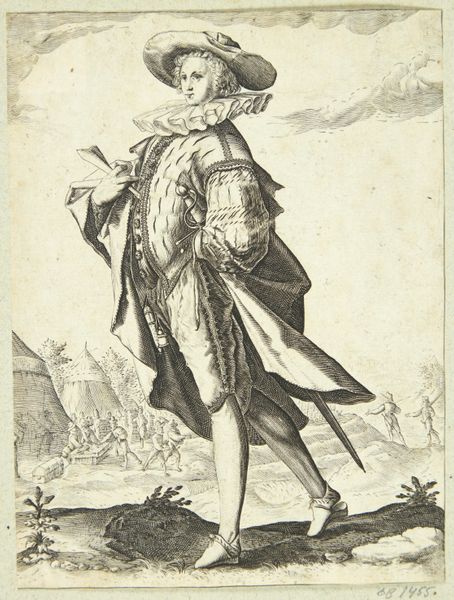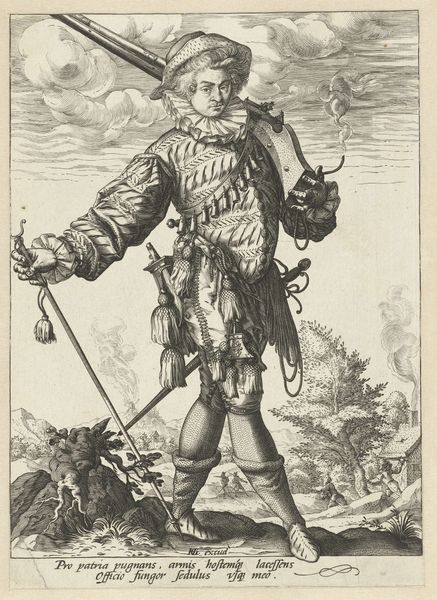
drawing, print, paper, engraving
#
portrait
#
drawing
#
pen drawing
# print
#
war
#
mannerism
#
figuration
#
paper
#
history-painting
#
engraving
Dimensions: 273 × 191 (image); 285 × 194 mm (plate/sheet)
Copyright: Public Domain
Editor: Hendrick Goltzius’s “The Standard Bearer, Turned to Left,” created in 1587, is a really striking engraving. I am immediately struck by the dramatic pose of the standard bearer and how confidently he stands, seemingly oblivious to the fighting occurring behind him. What historical context informs how we view this work today? Curator: Considering the late 16th century in the Netherlands, we see a society embroiled in the Eighty Years' War against Spain. Prints like these weren’t simply aesthetic objects, but actively shaped public perception of heroism and national identity. How might the idealization of this soldier affect contemporary viewers? Editor: That's fascinating! I guess portraying him so confidently might have been meant to inspire hope, to keep morale up despite the conflict and represent what they were fighting for. Would prints like these have circulated widely at the time? Curator: Precisely. The proliferation of prints was a powerful tool for disseminating political and social ideals. Think of it as early modern propaganda. Goltzius wasn't just depicting a soldier; he was constructing a visual symbol of Dutch resistance and strength. The details, like the elaborate costume, further emphasize the wealth and power at stake. Did wealthy merchants purchase such objects? Editor: Probably. So, viewing it today, it’s easy to forget this piece wasn't just passively observed but had a real job to do in shaping minds at the time. It’s quite remarkable how art can influence collective consciousness during periods of turmoil. I suppose, like many artworks of the past, "The Standard Bearer" acted more dynamically in society at that time than we would assume in the present day. Curator: Exactly. This piece invites us to consider how art participates in shaping our understanding of history, valorizing those involved in military operations of the day. I’ve learned more about Goltzius’ position on heroism myself today too!
Comments
No comments
Be the first to comment and join the conversation on the ultimate creative platform.
